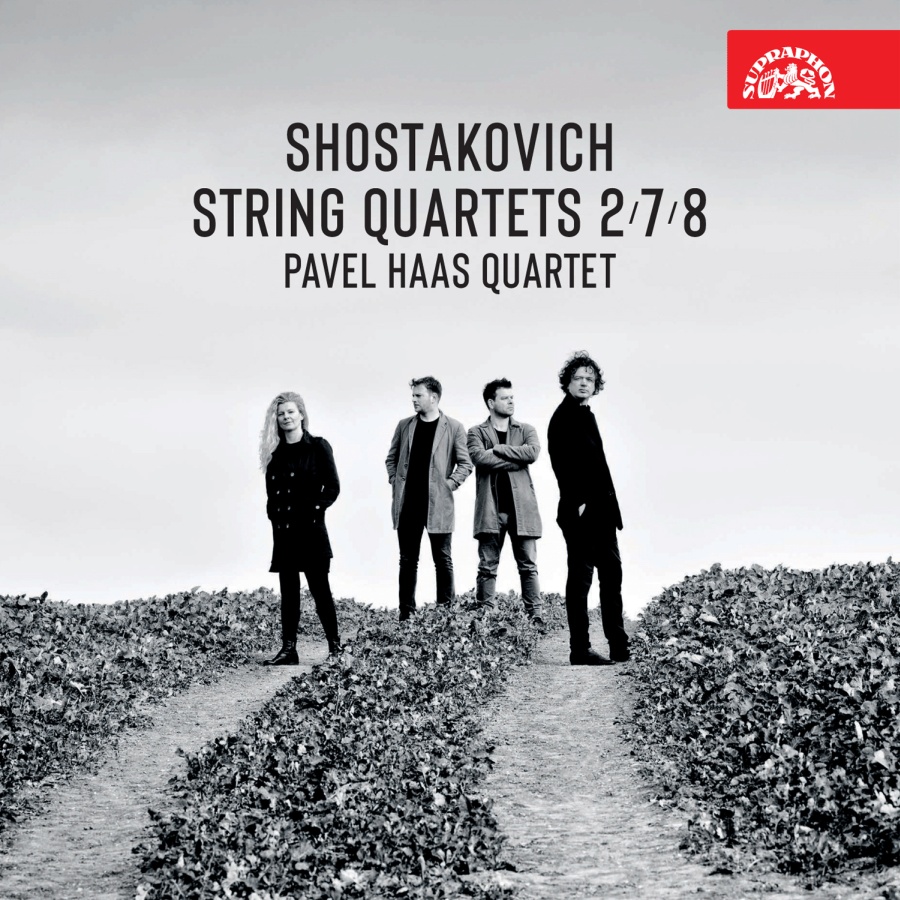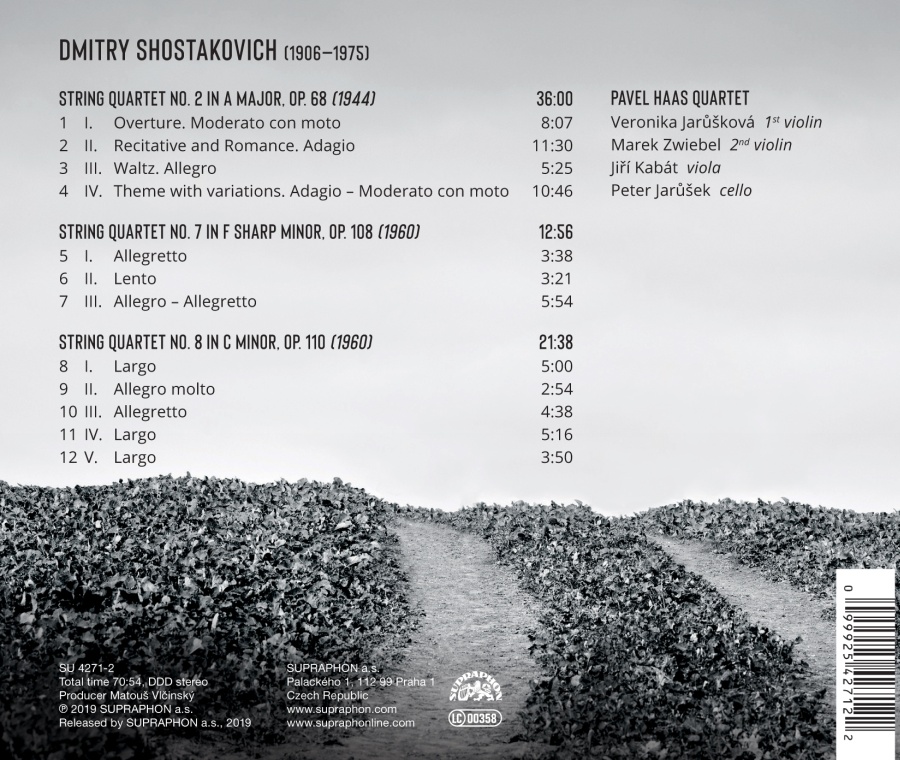
kompozytor
Shostakovich, Dmitry
tytuł
Shostakovich: String Quartets Nos. 2; 7; 8
wykonawcy
Pavel Haas Quartet
nr katalogowy
SU 4271-2
opis
Shostakovich – his music is a challenge each and every quartet sooner or later has to face up to. Yet when it comes to the Pavel Haas Quartet, it seems to be in their very DNA. The ensemble’s unbridled, impulsive and, now and then, frenetic energy, sense for extreme contrast, ability to bring to bear gradation from breath-taking subtlety and tenderness to symphonic drama are facets essentially incident to Shostakovich’s music. Although composed in safety, away from the horrors of World War II, String Quartet No. 2 (1944) reflects the suffering, uncertainty and anxiety of living at the time (the lyrical Recitative of the second movement, as performed by Veronika Jarůšková, the first violin). Both dating from 1960, String Quartets Nos. 7 and 8 are truly intimate confessions. While Shostakovich dedicated the former (the shortest piece of the cycle) to the memory of his first wife, he most likely intended the latter as his own epitaph, at the time when be hovered on the thin line between life and death. Attesting to the autobiographical nature of String Quartet No. 8 is the opening DSCH motif, Shostakovich’s musical signature, which reoccurs throughout the piece. • The Pavel Haas Quartet surpass the abyss of time, as well as the barrier of personal physical existence, delving into the very centre of Shostakovich’s music and reflecting the full scale of emotions with airiness, as if the music were their own.
nośnik
CD
gatunek
Muzyka klasyczna
producent
Supraphon
data wydania
30-09-2019
EAN / kod kreskowy
099925427122
Produkt nagrodzony:
BBC Music Magazine: 'Critic's Choice' (2019)

(Produkt nie został jeszcze oceniony)
cena 89,00 zł
lubProdukt dostepny w niewielkiej ilości.
Wysyłka w ciągu 3 dni roboczych
Darmowa wysyłka dla zamówień powyżej 300 zł!
Darmowy kurier dla zamówień powyżej 500 zł!
sprawdź koszty wysyłki







































